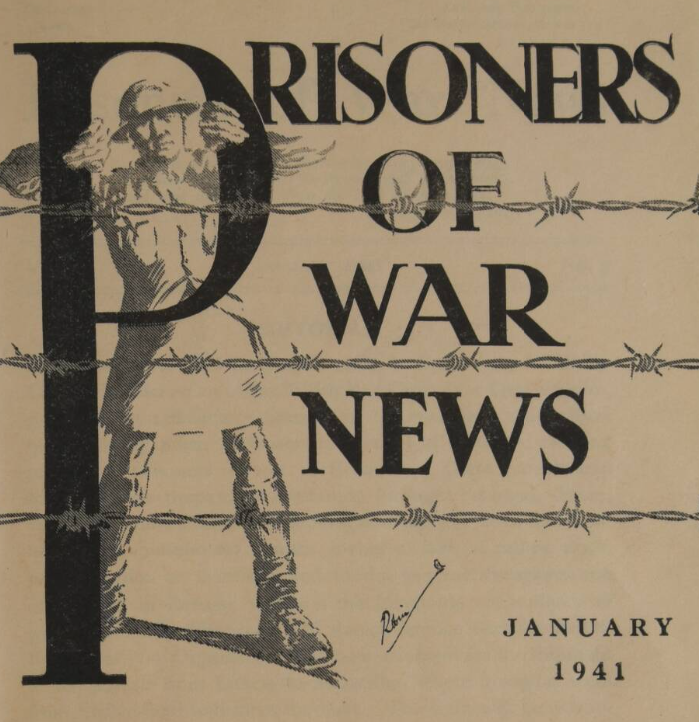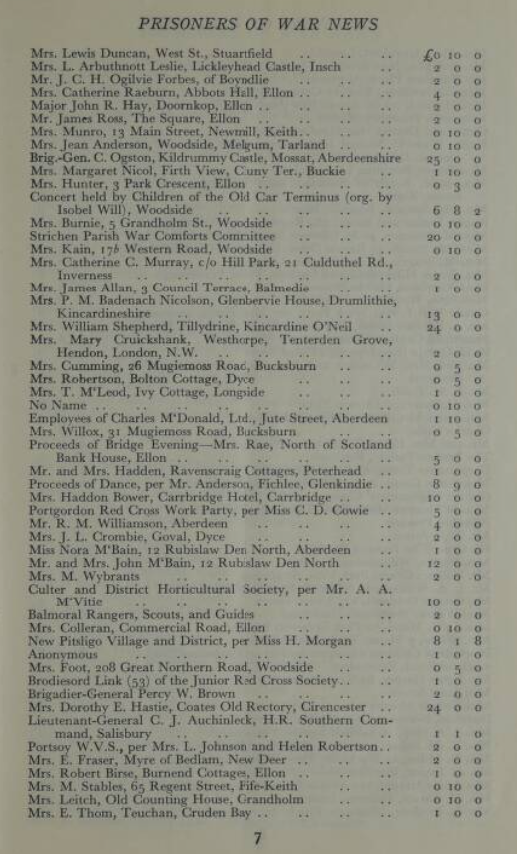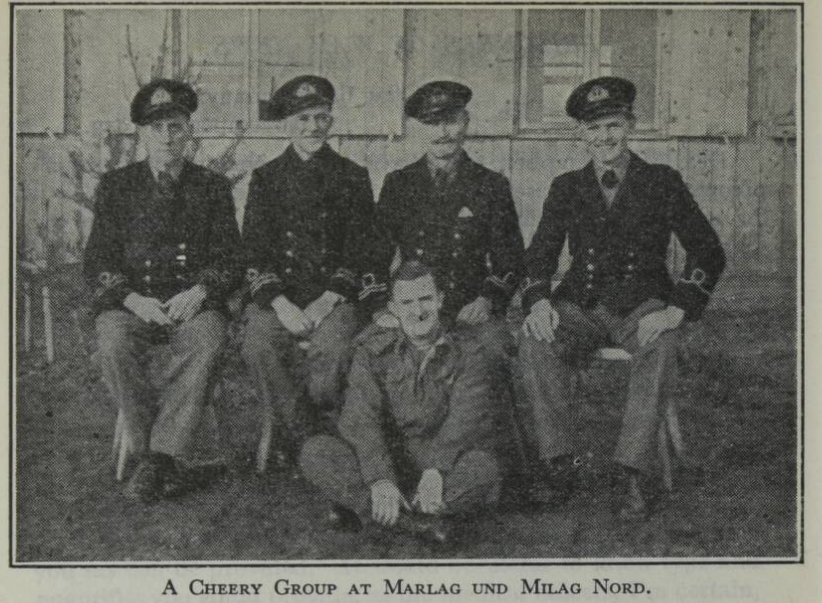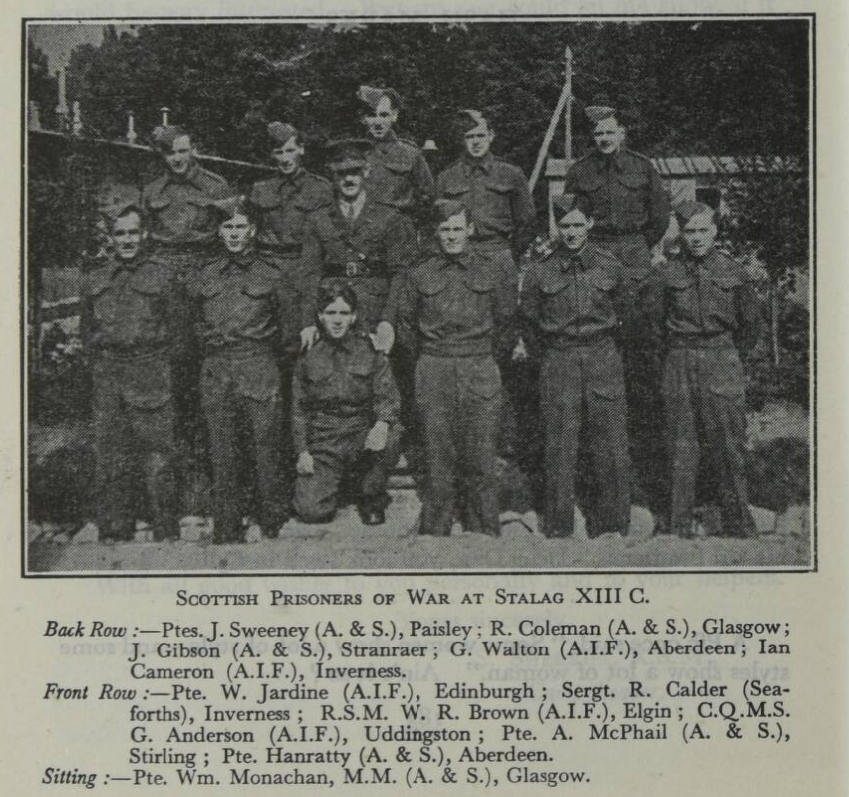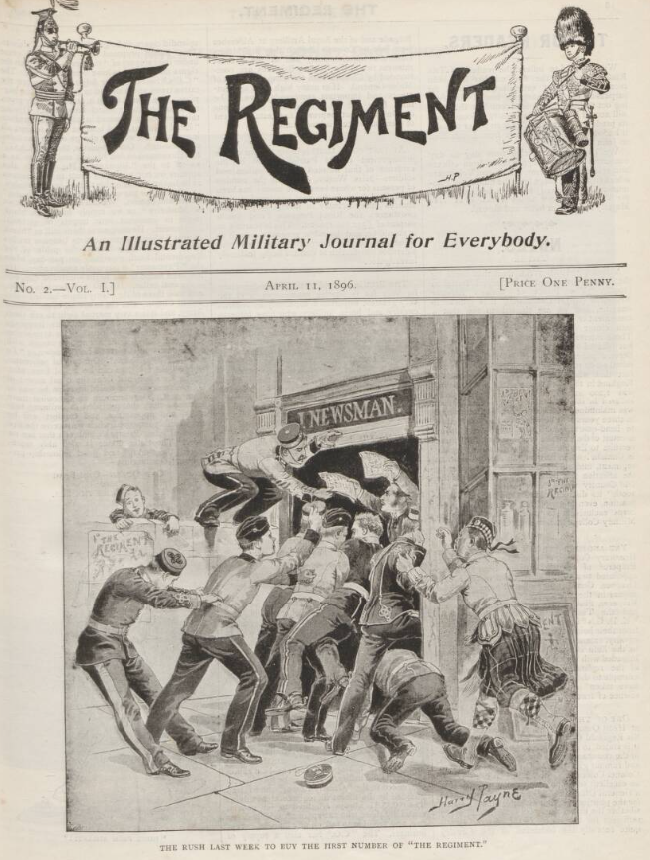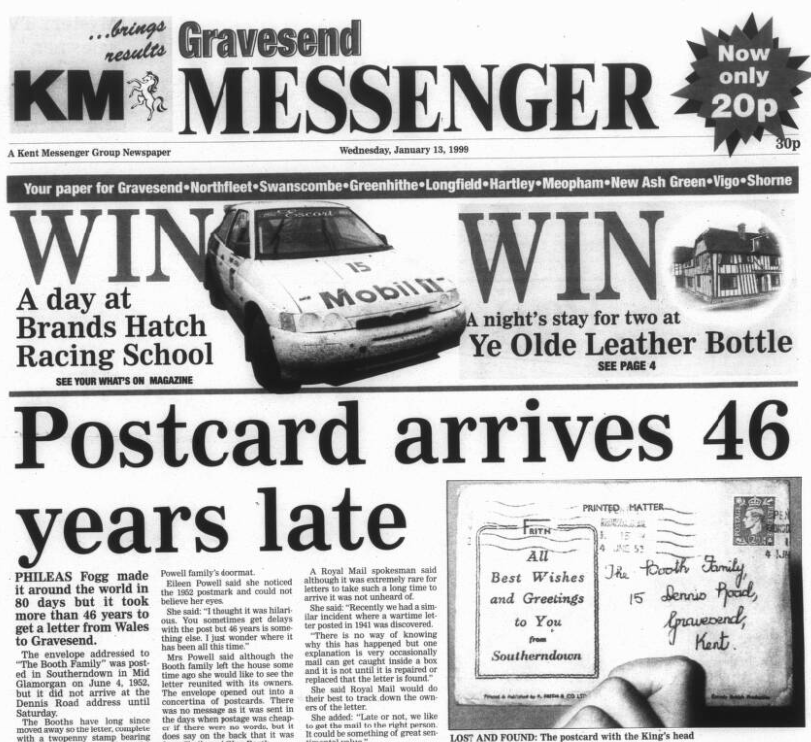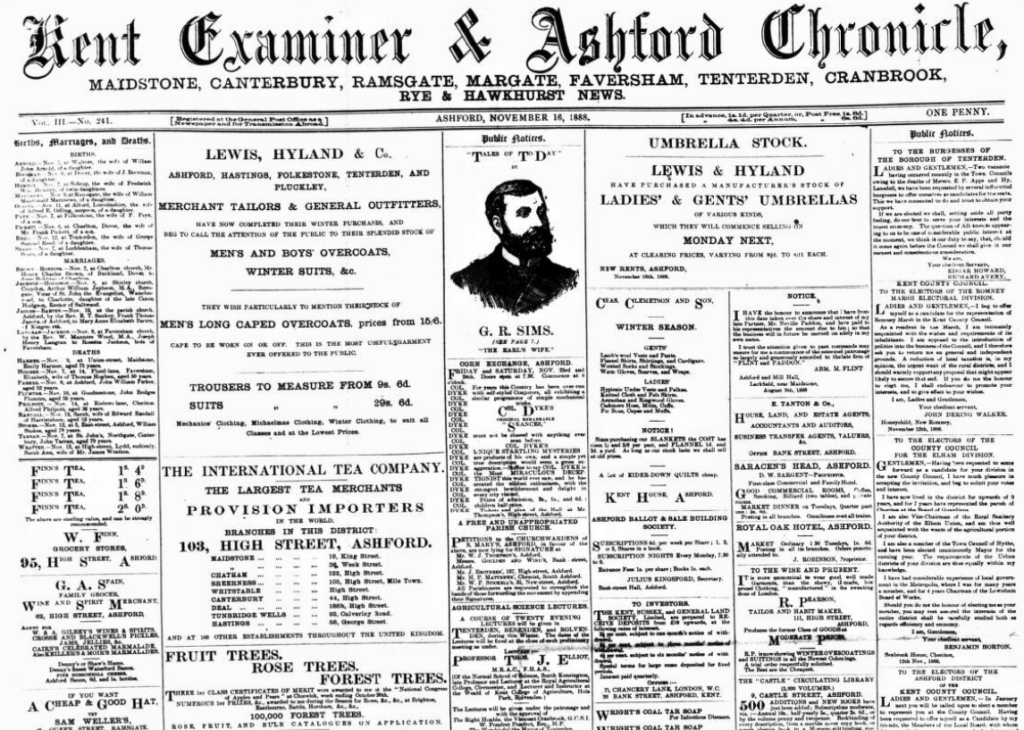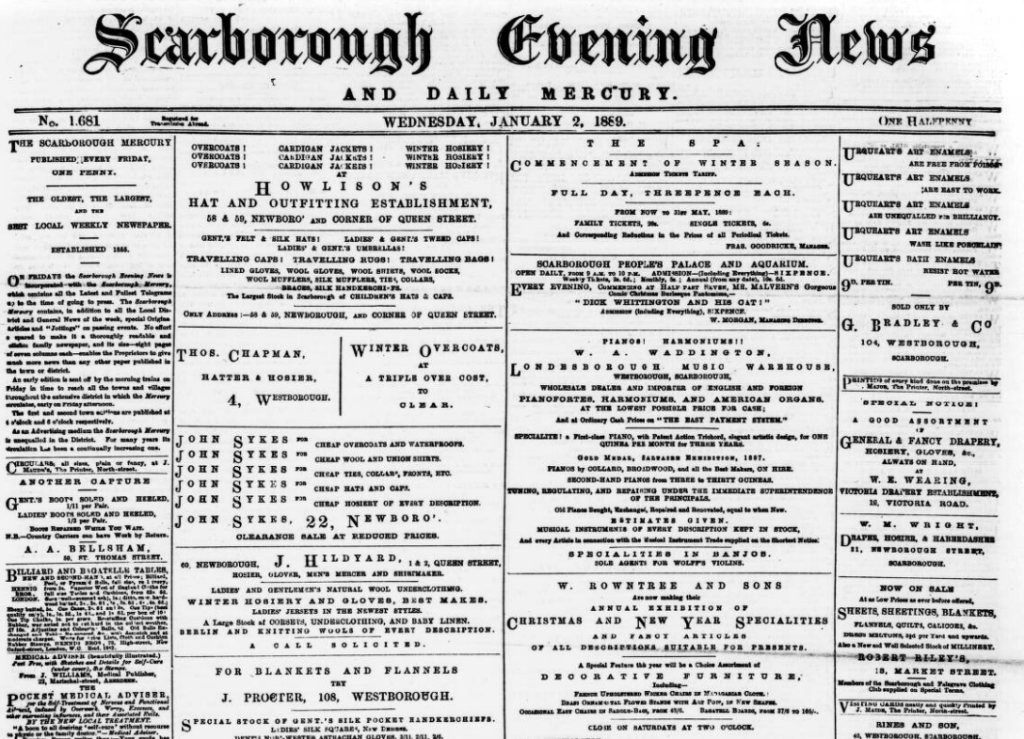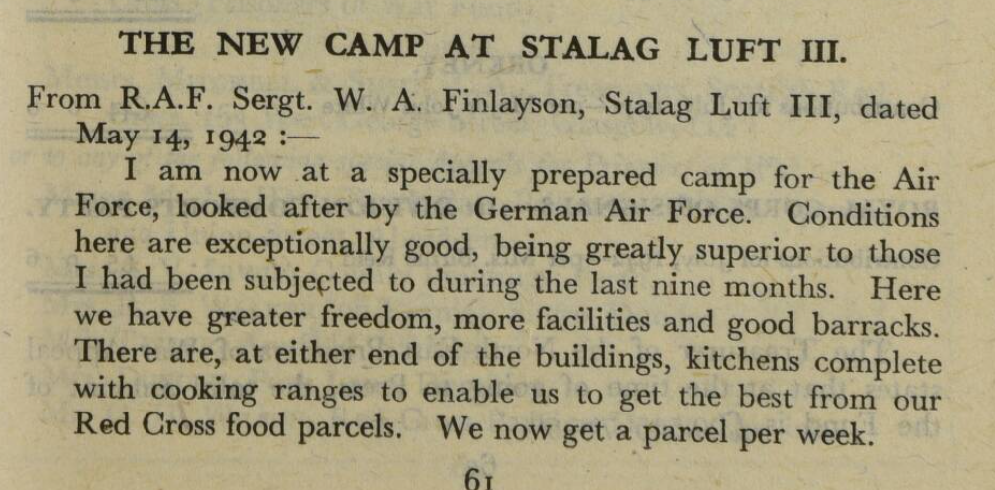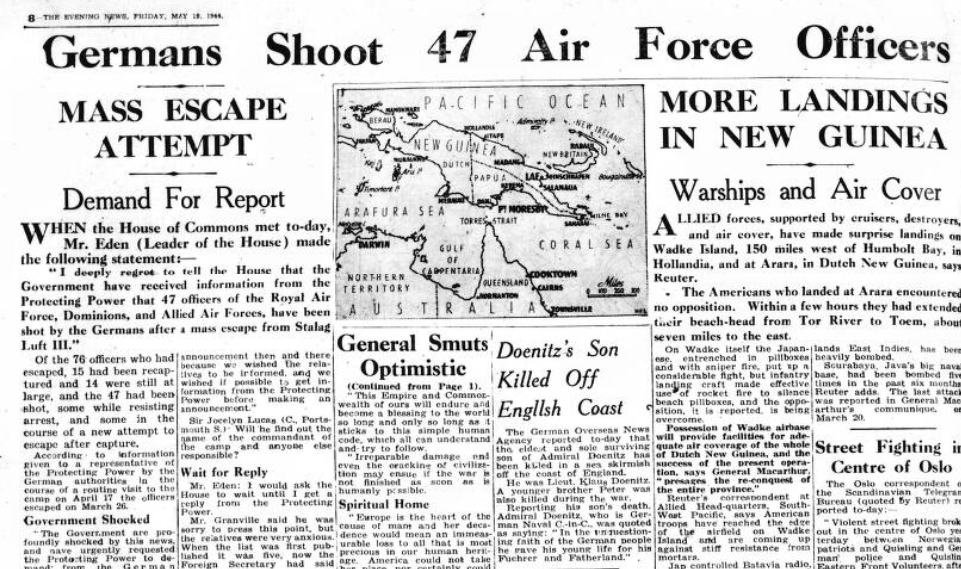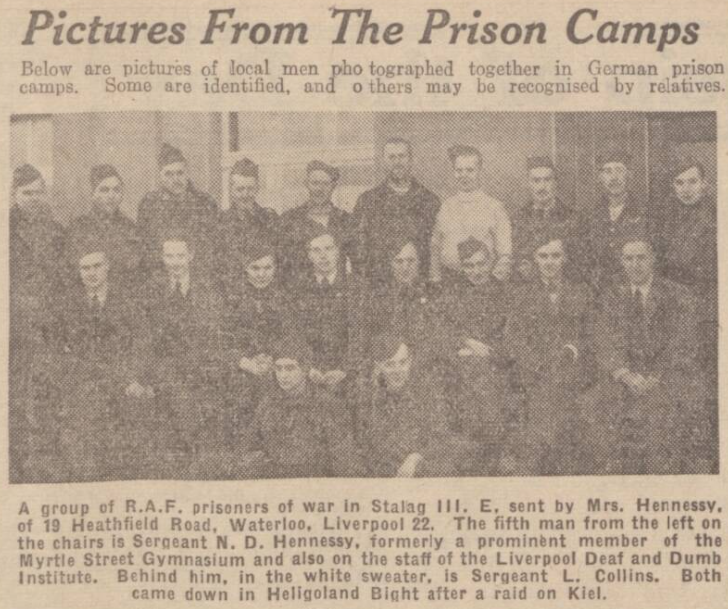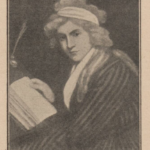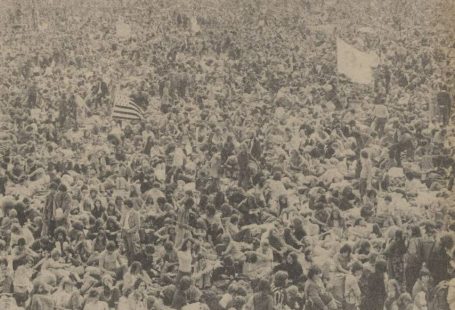This week at The Archive we are welcoming five brand new titles, including the fascinating Prisoners of War News, which sheds a light on those servicemen held captive behind enemy lines during the Second World War. Meanwhile, we have added an impressive 292,085 brand new pages to our collection this week, as we move ever closer to our next landmark of 75 million pages.
Furthermore, from Bridlington to Broughty Ferry, from Halifax to Hartlepool, from St Andrews to Sheffield, we’ve updated 17 of our existing titles from across England and Scotland. So read on to discover more about our new and updated titles of the week, and also to learn about Stalag Luft III, the prisoner of war camp that saw two Allied escape attempts, one of which was the inspiration for the film The Great Escape, via our new title the Prisoners of War News.
Register now and explore the Archive
Without any further ado, we’re delighted to introduce to you our first new title of the week, which is the Prisoners of War News. This title was first published in November 1940 by the Scottish Branch of the British Red Cross Society, and it was printed by the presses of the University of Aberdeen.
The inaugural edition of the Prisoners of War News explains the rationale behind its publication:
This Paper, as its title indicates, will provide all available news about our prisoners of war in Germany; it will not concern itself with the war, or with any news other than news about prisoners and about the various ways in which they can be helped; it is primarily addressed to the next-of-kin of the prisoners, and to all who have shown, by contributing to the Prisoners of War Appeal, a practical interest in the fate of our men from the North-East of Scotland who have had the misfortune to fall into enemy hands. People who have contributed to the Prisoners of War Appeal are naturally anxious to know what is being done with their money and how their contributions are being used to help the prisoners.
The paper would, therefore, concentrate on those prisoners of war from the north-east of Scotland, catering for the ‘thousands of mothers and wives throughout the North-East of Scotland [who] are anxious to hear any scrap of news about German prison camps.’ There was a need for people to ‘know all about the food parcels, how they are sent, what they contain, and above all, whether they are really reaching their destination.’
The Prisoners of War News set out to fulfil this need, and more. Within its first edition, it laid out the best types of food that should be sent to prisoners (sardines, syrup, sugar, sausages, oatcakes, biscuits, tea, butter, cocoa, soups, tinned fruits, mustard, salt, dried eggs, tinned beef, jam, marmalade, and vegetables), whilst explaining how ‘every prisoner of war will get his weekly food parcel, even if his next-of-kin cannot afford to make any contribution to the cost.’ The paper also printed a ‘List of Contributors’ towards the Prisoners of War Appeal, alongside ‘News from Prisoners.’
Published every month at the cost of 6d, with a verse from Jeremiah, namely Jeremiah 31:16 (‘Thus saith the Lord: refrain they voice from weeping, and thine eyes from tears: for thy work shall be rewarded; and they shall return from the land of the enemy’) as its by-line, by 1944 the Prisoners of War News had expanded to feature advertisements, alongside items of general interest. This reflected how the paper was being read and received by prisoner of war camps in Europe and indeed beyond, although every edition was published with this note:
While, as it is intimated, it is now possible for the ‘Prisoners of War News’ to reach the German Camps, the regulations do not allow copies to be posted direct by individual senders. Such copies can only be sent only by the printers, The University Press, Aberdeen, with whom anyone wishing to have copies posted to Germany should communicate.
The Prisoners of War News represented an exchange of information between those imprisoned and those back home, with the paper printing items like a ‘Prisoners of War Menu Card,’ notes from prison camps in the Far East, as well as such pieces as ‘Birds in a Prison Camp,’ which was penned by a ‘Buchan Naturalist,’ and ‘Presbyterians in Prison Camp,’ by the Reverend Gilbert C. McCutcheon. The Prisoners of War News also printed cartoons, drawings of prison camps, as well as photographs of prisoners.
Meanwhile, aimed at the prisoners themselves was a ‘monthly letter to prisoners,’ entertaining stories (such a ‘lady’s thrilling story’ regarding the Loch Ness monster), news from across Scotland, as well as details of Scottish prisoner of war appeals. The Prisoners of War News is, therefore, a fascinating tool for understanding the day to day life of Scottish (and other nationalities besides) prisoners of war in the Second World War, and a window into understanding the unique challenges they faced whilst in captivity.
Remaining with our military theme, we’re delighted to welcome our next new title of the week, which is The Regiment. Subtitled as an ‘Illustrated Military Journal for Everybody,’ this weekly paper was first published on 4 April 1896 at the cost of one penny. The Regiment was edited by one V. D’O Noble, who was a captain in the 1st Battalion Royal Inniskilling Fusiliers from 1887 to 1895. Noble then went on to found ‘two well-known military organs,’ namely The Sprig, and this week’s new title The Regiment.
Noble explained his reasons for founding The Regiment in the title’s debut edition:
Our aim is to illustrate the life of the soldier on duty and off, in barrack and camp, seriously and from the humorous point of view, in such a way that those hitherto unacquainted with military matters cannot but obtain a thorough knowledge of the land service, as well as instruction and amusement from the sketches of some of the ablest and most popular artists of the day.
With a staff comprised of ‘service men,’ Noble outlined what sort of content The Regiment would contain:
We propose to give each week Service Notes in a readable and condensed form, as well as anecdotes, brief accounts of successful soldiers and places made famous in the history of the Empire by the valour of its troops, regimental traditions, and a story by a well-known and appreciated writer.
To this end The Regiment, which was published in London, filled its pages with thorough descriptions and photographs of military stations, articles on the ‘Life of a Soldier,’ reports on ‘Foreign Armies,’ news from the volunteer and militia services, as well as from ‘The Sister Service,’ namely the Royal Navy. It also printed cartoons of military life, poetry, a prize competition, short stories, and a weekly calendar.
Our next two new titles of the week both hail from Kent, the first being the Gravesend Messenger. The Gravesend Messenger is part of the Kent Messenger series of newspapers, with the Kent Messenger tracing its roots from the Maidstone Telegraph, which was founded in 1859.
The paper for Gravesend, Northfleet, Swanscombe, Greenhithe, Longfield, Harltey, Meopham, New Ash Green, Vigo and Shorne, the Gravesend Messenger is a weekly title that appears every Wednesday. Published in the town of Gravesend, which lies in northwest Kent on the south bank of the River Thames, the Gravesend Messenger appears to this day and in 2017 was the recipient of the ‘Newspaper of the Year’ title at the Kent Press & Broadcast Awards.
The next of our duo of new Kent titles is the Kent County Examiner and Ashford Chronicle, which was founded in 1884 by general store owner Barham Prett Boorman. Tenterden-based Boorman published this lively title, which ran with the subtitle of the ‘Maidstone, Canterbury, Faversham, Tenterden, Cranbrook, Rye & Hawkhurst News,’ in Ashford, in the heart of Kent.
Filling eight pages, the Kent County Examiner and Ashford Chronicle appeared every Friday at the cost of just one penny. The paper had a focus on local news, printing the latest from the likes of Lydd, Goudhurst, Marden, Biddenden and Cranbrook, as well as from Kent and the neighbouring county of Sussex. It reported from the Kent General Sessions, the local police court, as well as printing ‘jottings from Maidstone.’
Meanwhile, the Kent County Examiner and Ashford Chronicle printed a range of special interest items, including serialised fiction, reviews of books and plays, a ladies’ column, as well as extensive coverage of local football matches. Its owner, Barham Prett Boorman, would go on to purchase the Kent Messenger in 1890, and in 1913 the title became known as the Kent Messenger & Ashford Chronicle, incorporating his two enterprises. Boorman passed away in 1928, after 40 years at the helm, his newspaper titles remaining in the hands of his family.
We travel north for our last new title of the week, which is the Scarborough Evening News. Published in the resort town of Scarborough in North Yorkshire, which is the largest town on the Yorkshire coast, the Scarborough Evening News was published in 1882, in opposition to rival paper the Scarborough Daily Post, which was founded a few years previously in 1876.
By the 1880s, the Scarborough Evening News claimed to be the ‘largest daily paper published in Scarborough,’ with the ‘fullest telegrams and the latest news [being] made special features.’ At the cost of just one halfpenny, the newspaper was also the ‘recognised organ of the Liberal party.’
By 1921 the newspaper had done so well it bought out rival the Scarborough Daily Post. Some sixty years later, in the 1980s, the newspaper was still running, filling sixteen pages at the cost of fifteen pence. Providing a local slant of the news of the day, alongside global and national headlines, the Evening News is known to serve the area of Scarborough and a 20 mile radius around the town, incorporating Whitby within its remit.
In 2006 the newspaper printing office in Scarborough for the Evening News closed, ending the town’s history of printing, which stretched back some 150 years. In 2012 it was relaunched as a weekly paper, and it is still going to this day as the Scarborough News.
That may be it from our wonderful new titles of the week – although stay tuned for more from the Prisoners of War News – but we have a wonderful array of new pages joining our existing titles for you to explore this week. Leading the charge are the 14,000 brand new pages we have added to fellow Yorkshire title the Ripon Gazette, whilst over 11,000 brand new pages join the Fife Free Press, and Kirkcaldy Guardian. Other notable updates this week are the over 7,000 brand new pages that we have added to Sheffield sporting title the Star Green ‘un, whilst over 7,000 brand new pages also join County Durham’s Hartlepool Northern Daily Mail.
Heading north of the border, we’ve updated seven of our Scottish titles, with new pages joining the likes of the Broughty Ferry Guide and Advertiser, the Galloway Gazette and the Fraserburgh Herald and Northern Counties Advertiser.
Daily Life in Stalag Luft III
Stalag Luff III (Main Camp, Air, III) was a Luftwaffe-run prisoner of war camp in Sagan, Lower Silesia (now Żagań, Poland) for captured Allied aircrew. It was famously home to two Allied escape plots, one in 1943, and another in March 1944. This latter escape attempt, which saw 73 Allied airmen escape, only for 70 to be recaptured and 50 of these men to be subsequently executed, would act as the inspiration for classic film The Great Escape.
Our new title this week, the Prisoners of War News, sheds a fascinating light on daily life in Stalag Luft III, as it included reports from the prison camp on a fairly regular basis. We first read about Stalag Luft III in the August 1942 edition of the Prisoners of War News, some months after it was first opened in March 1942. The paper printed this missive from Sergeant W.A. Finlayson, of the R.A.F., under the heading ‘The New Camp at Stalag Luft III:’
I am now at a specially prepared camp for the Air Force, looked after by the German Air Force. Conditions here are exceptionally good, being greatly superior to those I had been subjected to during the last nine months. Here we have greater freedom, more facilities and good barracks. There are, at either end of the buildings, kitchens complete with cooking ranges to enable us to get the best from our Red Cross food parcels. We now get a parcel a week.
One of the next first hand accounts of Stalag Luft III was printed by the Prisoners of War News in January 1944, which addressed the ‘Points System in Prison Camps.’ This was a way for prisoners to exchange food and other items. A British prisoner, held in Stalag Luft III, had written the following:
We have an exchange system for surplus foods. It’s called ‘Foodacco’ and works very well. Cigarettes are 40 points per hundred and chocolate 37 points per quarter pound. So those who require chocolate trade in their cigarettes and everyone is happy.
The next report from Stalag Luft III in the Prisoners of War News came in June 1944. Interestingly, despite widespread coverage of the March 1944 escape in the British press, it is not mentioned by this paper. Perhaps this was true to the paper’s unwillingness to talk about the war as a whole, as laid out in its first edition. However, the news from Stalag Luft III was ironic to say the least, the prisoners there having been given the chance to compete in an ‘architectural competition,’ such ingenuity being evidenced by the March 1944 escape plot.
The Prisoners of War News piece describes how:
At Stalag Luft III, the German camp for airmen, International Red Cross has organised an architectural competition amongst war prisoners. Features include a design for a house for bomb-devastated areas, to be composed wholly or partly of pre-fabricated units, and the lay-out of a rural centre. The competition is open to war prisoners of all nationalities.
Meanwhile, the Prisoners of War News contains multiple reports on the examinations that prisoners had passed whilst being held captive behind enemy lines. In July 1944 the Prisoners of War News reported how ‘a prisoner in Stalag Luft III has passed the Royal Society of Arts examination in Danish,’ whilst in November 1944 the paper detailed how ‘in Stalag Luft III, five men sat for the Electricity and Radio-Communication examination of the City and Guilds of London Institute, and out of the fifteen papers sent in, there were ten First Classes, two Seconds and three failures.’
The next month, in December 1944, it was reported that copies of the Prisoners of War News had actually arrived in Stalag Luft III. This confirmation was dated 14 September 1944, and it confirmed receipt of the April 1944 edition of the paper.
One of the final extensive mentions of Stalag Luft III in the Prisoners of War News came in that same December 1944 edition, which detailed a bridge competition to be held at the camp. The paper reported how:
The camp-wide bridge tournament, the bridge play-off to determine the Centre compound champs, is now on, says the Gefangenen Gazette of September 14. To date, over 1000 teams have entered the meet, each entry donating one package of American cigarettes as an entry fee. At present, round-robin play goes on in each block. With the completion of this initial play two teams will be entered from each block. The final championship is to be determined by duplicate play. Winners of first place are to receive 4000 cigarettes and second place gets 2000. Lieut. Dolberger is in charge of the match.
In late January 1945 the 11,000 POWs were marched away from Stalag Luft III, either reaching Stalag XIII-D at Nuremberg or Marlag und Milag Nord at Westertimke by early February.
Find out more about Stalag Luft III, life as a POW in the Second World War, and much more besides, in the pages of our newspaper Archive today.
New Titles
| Title | Years Added |
| Gravesend Messenger | 1998-1999 |
| Kent County Examiner and Ashford Chronicle | 1888-1889 |
| Prisoners of War News | 1940-1945 |
| Scarborough Evening News | 1889, 1986-1992, 1995-1997 |
| The Regiment | 1896, 1898-1901 |
Updated Titles
This week we have updated seventeen of our existing titles.
You can learn more about each of the titles we add to every week by clicking on their names. On each paper’s title page, you can read a FREE sample issue, learn more about our current holdings, and our plans for digitisation.
| Title | Years Added |
| Arbroath Herald | 1985 |
| Bridlington Free Press | 1986 |
| Broughty Ferry Guide and Advertiser | 1974-1978 |
| Fife Free Press, & Kirkcaldy Guardian | 1971-1973, 1979-1982 |
| Forfar Dispatch | 1985 |
| Fraserburgh Herald and Northern Counties’ Advertiser | 1959 |
| Galloway Gazette | 1986 |
| Halifax Daily Guardian | 1915-1917 |
| Hartlepool Northern Daily Mail | 1983 |
| Horncastle News | 1972-1976 |
| Market Harborough Advertiser and Midland Mail | 1992 |
| Melton Mowbray Times and Vale of Belvoir Gazette | 1992-1993 |
| Middleton Guardian | 1988-1989 |
| Northampton Mercury | 1987 |
| Ripon Gazette | 1958, 1973-1977, 1988, 1997 |
| St. Andrews Citizen | 1992 |
| Star Green ‘un | 1907-1908, 1962-1974 |
You can keep up to date with all the latest additions by visiting the recently added page. You can even look ahead to see what we’re going to add tomorrow.


